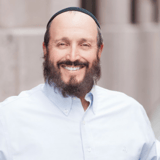Summary
Research is an inherent part of design, and operationalizing how insights are generated and used is one of the more challenging aspects of design operations. Overcoming the lack of good tools, taming the complexity of research at scale, and navigating the world of different forms of inquiry are just a few of the obstacles to overcome. That said, we are starting to see a range of benefits from implementing research operations in modern design organizations.
Key Insights
-
•
Banks like Capital One must manage research amid strict regulations and risk, requiring innovative recruiting and study designs.
-
•
Specialized research operations and curricula teams at Capital One remove procedural inefficiencies and ensure compliance.
-
•
Risk Management at Capital One includes embedded 'risk-sharper' roles that guide research teams through compliance challenges.
-
•
'Wine and dine' sessions enable rich qualitative insights by combining customer interaction with large employee participation, without traditional focus group pitfalls.
-
•
User research approaches must vary by business context: B2C, B2B, and internal IT differ greatly in user access and needs.
-
•
Agile’s dominance in software development creates challenges for user-centered design integration, requiring adaptations or use of Lean methodologies.
-
•
Qualitative research provides rich user insight and inspiration for designers, while executives rely more on quantitative data for decision-making.
-
•
The PURE method formalizes usability evaluation through expert ratings, producing measurable scores that drive executive action and product improvement.
-
•
The user experience talent pool is small and highly sought after, making it critical to structure roles to attract and retain specialists rather than expecting 'unicorns.'
-
•
Effective knowledge management for UX research must support the entire insight lifecycle—from ideation to product impact—to avoid losing valuable learnings.
Notable Quotes
"Capital One is really a bank ... it’s out to change banking for good by becoming a tech company that just happens to do banking."
"We call it research goo: regulation, risk, inefficiencies that complicate research in banks."
"Risk-sharper is a role assigned within Risk Management that carries teams through the risk process to mitigate it."
"Wine and dine is not a focus group; it’s more employees than customers interacting in small groups to get deep insights."
"In business-to-business contexts, finding a champion within your sales or account management teams can open access to users for research."
"You need to know tomorrow’s user as well as today’s because their characteristics differ greatly according to diffusion of innovation."
"Agile is here to stay because engineering managers won’t hire for anything else; user-centered design must fit into Agile somehow."
"Designers thrive on qualitative research because it gives them access to the root of the problem beyond just numbers."
"Never put numbers on qualitative research findings; qualitative insights are about richness and why, not how many."
"The PURE method measures usability by scoring cognitive load and friction at each step of fundamental user tasks."
Or choose a question:
















More Videos

"Good design is good business."
Doug PowellClosing Keynote: Design at Scale
November 8, 2018

"Power dynamics exist in every session. People don’t want to be embarrassed or feel put on the spot."
Mila Kuznetsova Lucy DentonHow Lessons Learned from Our Youngest Users Can Help Us Evolve our Practices
March 9, 2022

"Signals are something that’s happening at the horizon, percolating at the fringes of society or in a narrow subset of the population."
Sarah GallimoreInspire Progress with Artifacts from the Future
November 18, 2022

"The ultimate measure is bringing value so people invite you back to work with them again and again."
Lada Gorlenko Sharbani Dhar Sébastien Malo Rob Mitzel Ivana Ng Michal Anne RogondinoTheme 1: Discussion
January 8, 2024

"Our goal is to be AI fluent, not necessarily AI experts."
Alnie FigueroaThe Future of Design Operations: Transforming Our Craft
September 10, 2025

"Every board member can interpret an NPS score differently depending on their role and responsibilities."
Landon BarnesAre My Research Findings Actually Meaningful?
March 10, 2022

"We have the Big C and the Little C: our external customers and our salespeople using the tools every day."
Emily EagleCan't Rewind: Radio and Retail
June 3, 2019

"Managing resistance is mental; customers might resist because they've learned workarounds with legacy systems."
Malini RaoLessons Learned from a 4-year Product Re-platforming Journey
June 9, 2021

"Designers are often seen as bottlenecks because our work is harder to estimate and track than engineering’s."
Asia HoePartnering with Product: A Journey from Junior to Senior Design
November 29, 2023
















